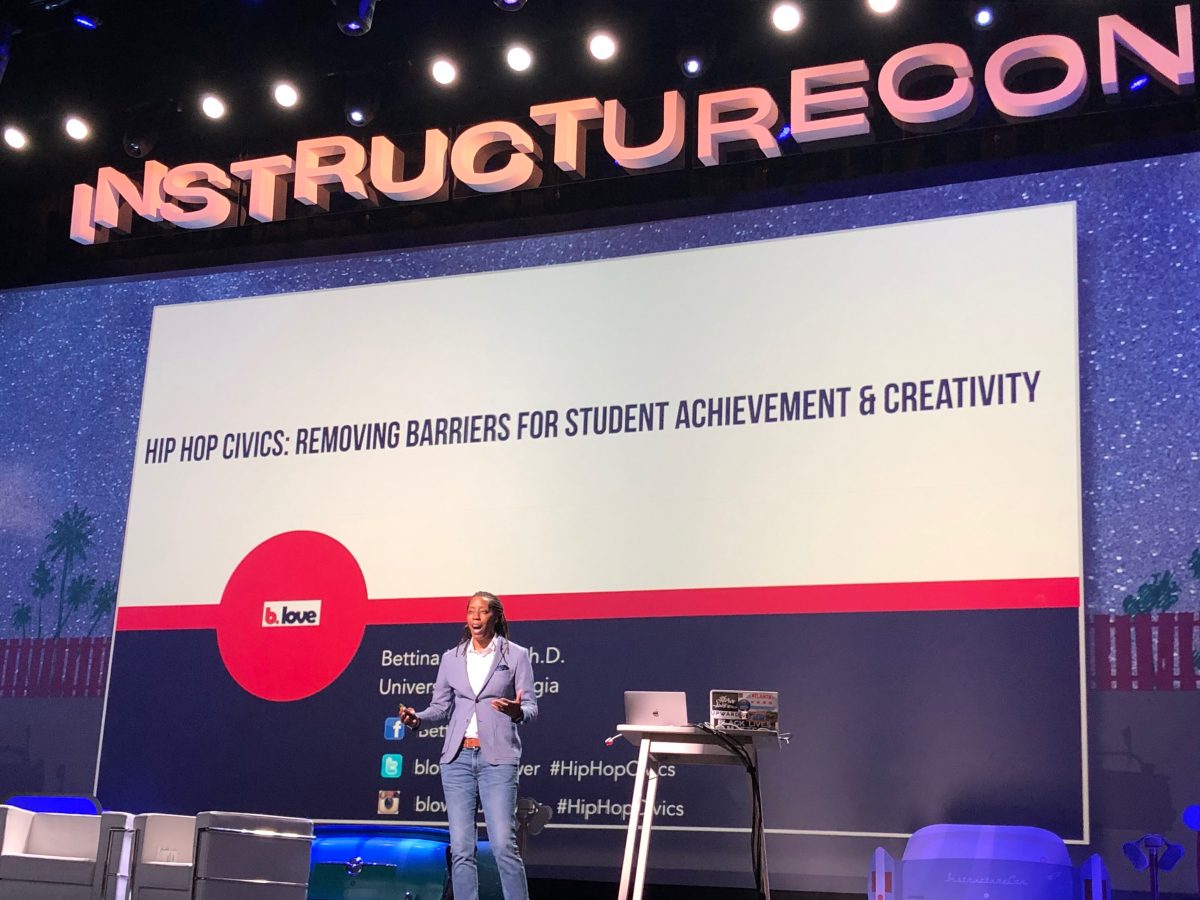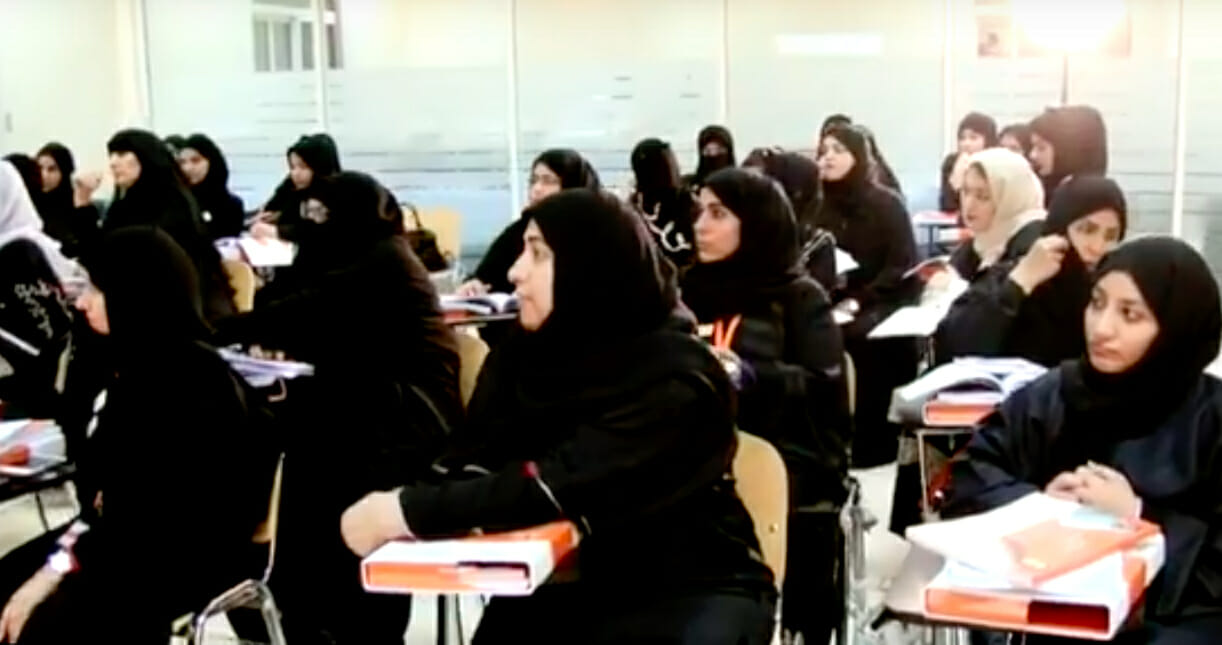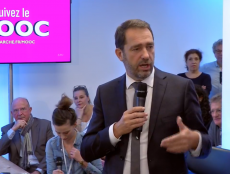
Articles
Editor’s Picks
In Edtech, a Common Interest Shouldn’t Get in the Way of a Common Mission
By Henry Kronk
July 14, 2019
2019 marked my first InstructureCon, but according to what I heard from almost every attendee in Long Beach, Calif. over the past week, this one was notable for several reasons. It was the biggest to-date. It featured a keynote from Order of Canada member Malcolm Gladwell. It did not occur among the Rocky Mountains. But the edtech event was notable for another reason as well. It marked a year since Canvas LMS had edged out Blackboard in terms of top U.S. market share, according to the eLiterate blog.
Going in, I knew that there would be no way to get around bias towards Canvas—both from Instructure employees and from the teachers, instructional designers, administrators, technical staff, and others that made up their user base. I was surprised, however, at how quick and eager most attendees were to verbally trash Instructure’s competitors.
Management of Moodle was described to me as a ‘dictatorship’ that sacrificed UX for esoteric customization. Blackboard users were painted as edtech luddites, addicted to the familiarity of a backwards platform. Over breakfast, I casually mentioned how I was surprised to learn that the long-proprietary Blackboard was seeing their fastest growth in deployments of their open-source product. A member of an investment firm who was sitting at the table laughed, saying how any marginal growth would look good in a company that amounted to a sinking ship.
Canvas, meanwhile, was described in pseudo-religious terms. People spoke about ‘converting’ to the platform. Someone in IT said how he was helping his faculty ‘see the light.’
Instructure CEO Dan Goldsmith: We Have a Common Mission
Ironically, the single person who spoke to me in positive terms about other LMS providers was Instructure CEO Dan Goldsmith.
“I have good conversations with all of our competitors,” he said. “I’ve talked to the CEOs of every single one. Ultimately, we’re all serving a similar space. I know that sounds odd to think that way. But at the end of the day, we all have a common mission. We are running a business, but competition is a good thing. Competition will drive innovation and continue to make us hungry. If what we do inspires our competitors in the market to be that much better, then the outcome, overall, can be really beneficial to students and teachers.”
Goldsmith said these words during an interview that immediately followed a keynote speech by Dr. Bettina Love. Dr. Love teaches at the University of Georgia and advocates for ‘hip hop civics.’ She described this work in her recently published book, We Want to Do More than Survive: Abolitionist Teaching and the Pursuit of Educational Freedom.
In her keynote, Dr. Love provided a rundown of the history of the Western enslavement of West African peoples over the past 400 years to a crowd that was predominantly white (myself included). She spoke about how we all arrive at school with a cultural memory and a cultural DNA.
“That’s when someone says, ‘You walk just like your grandad. Or your grandma used to do the same thing. Or you walk into a room, and you smell something, and it takes you back. That’s a cultural DNA, and we all have it. What I want to argue today is that you have to understand that the students in your classroom have gifts, they have talents that are beautiful, if you understand their culture.”

When Edtech and LMS Interact with Cultural DNA
Dr. Love then argued how brown and black students frequently display qualities that teachers look for. But teachers don’t see them for what they are because they don’t understand their cultural differences.
A huge body of research indicates that this is true of educational technology as well. Countless edtech products are found to produce positive results in specific contexts, but then fail to deliver in others, and at scale.
LMS—and the various different ways they are used—have begun to interact, mix, aid, and conflict with the cultural DNAs of learners around the world. As generations of learners continue to move through classrooms filled with digital technology, edtech will even begin to inform cultural DNA.
Different Edtech Tools Work More Effectively in Different Cultural and Socio-Economic Settings
Again, I fully expected InstructureCon to be full of Canvas enthusiasts. But I wasn’t expecting the ride-or-die mentality that I encountered. I don’t think that attitude is appropriate in edtech.
According to the advice of Dr. Love, educators and institutions should recognize, encourage, and reward diverse cultural contexts. If different edtech products and services work best in specific cultural, regional, and socio-economic environments, then there should be room for a diverse set of these tools in education systems.
I asked Dan Goldsmith how Instructure, a company that prides itself on meeting its community where they are, navigates the needs of a diverse user base.
He responded, “Canvas was built to be flexible and open. If you go and visit the schools and institutions that use Canvas today, it’s not identical. It’s not cookie-cut. There’s such variety in how Canvas is used, and we’re happy that the platform is flexible. There are over 250 applications that have been built within and on top of Canvas by our customers.”
I don’t doubt the truth of those words, and I don’t intend to use this post as an opportunity to say that any LMS or edtech product is better or worse than any other. But I can’t help myself thinking that, as LMS and education technology becomes a conduit of cultural DNA in classrooms around the world, there’s no way that a single company or product will be able to serve everyone.
It should be noted that there is still strong competition in the LMS space. When taking Canada into account, Blackboard actually still beats out Canvas in terms of market share. Brightspace and Moodle also still are used by millions of students in North America alone. Outside of the U.S., furthermore, Moodle and Blackboard still tend to dominate. As the years go by, hopefully even more will join this field.
There’s nothing wrong with choosing a favorite learning management system. But edtech users and companies should remember Goldsmith’s words: they have a common mission. To fulfill that mission, instructors and institutions need to meet students where they are. They need to suss out and encourage the expression of their cultural DNA. No single LMS will be able to further that effort for everyone.
Featured Image: Instructure SVP of Customer Success and Partnerships delivers a keynote during InstructureCon 2019.









No Comments